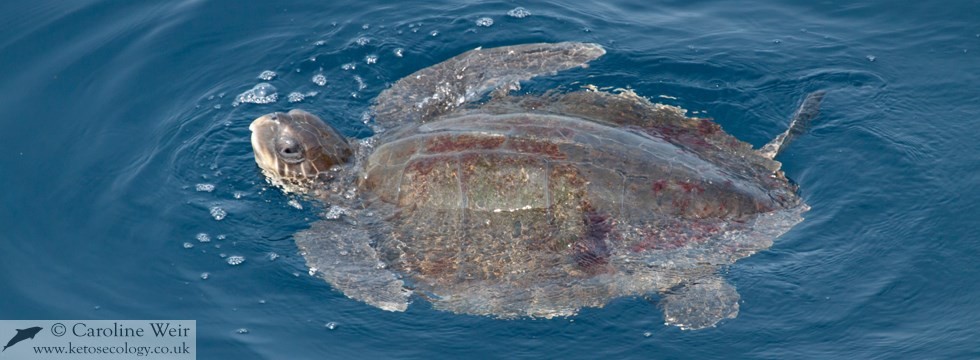Releasing sea turtles from fishing gear during offshore operations
Releasing sea turtles from fishing gear during offshore operations (i.e. live animals observed during seismic surveys or from drilling rigs) is an opportunity for offshore crews to contribute to both the conservation of endangered species and animal welfare. Animals left entangled so that they cannot actively swim or dive will not survive. Information on the occurrence of sea turtle entanglements, and advice on appropriate methods for approaching and releasing entangled animals in a safe and effective manner, is provided in the document download on this page.
One of the main anthropogenic threats that impacts on sea turtle populations is accidental capture in fishing nets, trawls and on long-lines throughout the world’s oceans. There are guidelines in place in many geographic regions to encourage fishermen to release live turtles found caught in their fishing gear, describing how to bring sea turtles onto boats, release them from netting and remove hooks from their mouths.
Unfortunately, large amounts of discarded fishing gear (or ‘ghost nets’) also occur in the world’s oceans (originating from accidental loss, storm damage, equipment failure, deliberate cutting of nets and long-lines, and dumping at sea) and these also trap turtles. Net that has been left in the water for prolonged periods may harbour a variety of marine life including algae, invertebrates, barnacles and fish, attracting foraging turtles which can then easily become accidentally entangled. It is not uncommon to observe several turtles caught in a single small piece of discarded fishing net. Months or even years after being lost or discarded at sea, these nets continue to catch, injure and kill marine wildlife. Other types of marine debris also snag turtles, particularly plastic debris such as packing wrap. Turtles caught in marine debris are restricted in movement and unable to dive or feed, dying either quickly from suffocation (when submerged in subsurface fishing gear) or, if trapped at the surface, dying slowly from starvation, laceration and/or infection.
It is not uncommon for the crews of oil rigs, seismic vessels and other platforms to observe live turtles entangled in fishing gear and other marine debris at sea. In recent years there have been several successful operations in response to these observations, where turtles have been freed from marine debris by small boat crews. A document has been produced to provide some guidance to developing and implementing safe turtle release procedures and this document can be downloaded from the link above.

Live sea turtles entangled in discarded fishing net.

Seismic crew releasing live olive ridley turtles from fishing gear.
All content and images are copyright Caroline R. Weir (2025)


